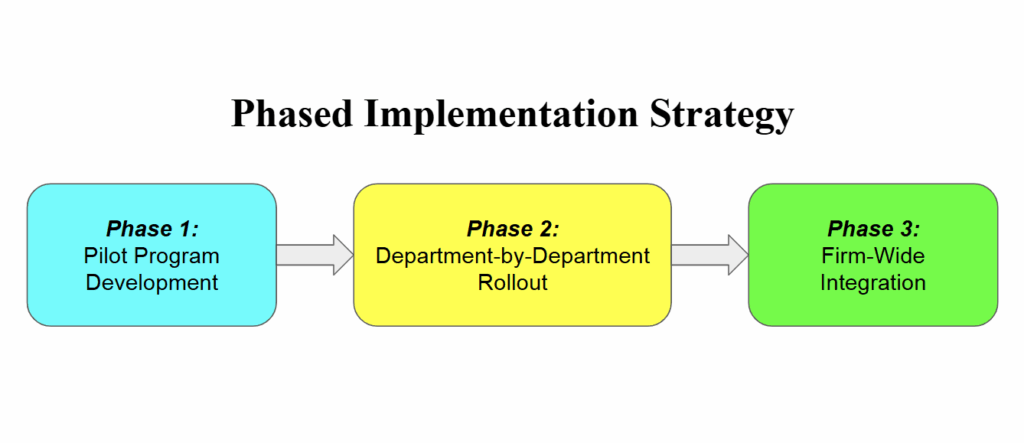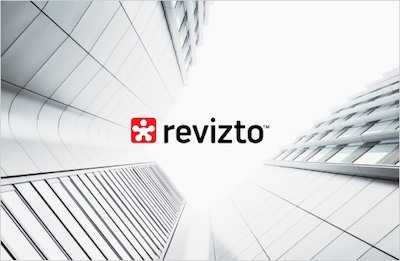What are the most effective ways to speed up technology adoption in my AEC firm?
- Running a digital readiness audit
- Structuring adoption in manageable, effective phases
- Empowering the team with a network of tech champions
- Making training continuous and contextual
- How to choose technologies that match firm goals
- How do we measure progress and meet client expectations?
- How different tools solve specific AEC challenges
- Key takeaways
- Frequently asked questions

Running a digital readiness audit
Before implementing any new technology in your AEC firm (Architecture, Engineering, and Construction), it is essential to conduct a comprehensive digital readiness audit, which serves as the foundation for successful transformation efforts. It is a systematic evaluation that reveals the current technological capabilities of your organization, identifies gaps that might hinder adoption, and offers a clear roadmap for prioritizing digital initiatives.
Components of a readiness audit
A thorough assessment of technological preparedness includes five essential components that provide comprehensive insights into your firm’s technology adoption potential:
- What does an Infrastructure Assessment entail? – Evaluating current hardware capabilities, software licenses, network bandwidth, and cybersecurity protocols
- What is included in Process Evaluation? – Mapping of existing workflows while identifying manual processes that can be streamlined
- What is the Cultural Readiness Analysis about? – Surveying employees about comfort levels with new technology and perceived barriers to learning
- What is the Financial Capacity Review? – Assessing the ability to invest in technology, training, and ongoing support beyond the initial costs
- How does one perform a Comprehensive Positioning Analysis? – Comparing current technology stack to client expectations and industry standards
This complete assessment prevents expensive missteps, creating a data-driven foundation for your future technology adoption strategy.
Leadership alignment assessment
Leadership commitment is the single most critical factor for the success of technological adoption in AEC firms. Even the most promising digital initiatives will face significant obstacles and employee resistance without unified support from the executives.
The effective assessment of leadership alignment begins with the evaluation of the technological literacy of decision makers. Leaders that lack technology fluency tend to underestimate implementation timelines or make unrealistic budget assumptions.
Resource Commitment Evaluation examines whether leadership demonstrates genuine support through budget allocation, time investment, and personnel assignments. Vision Alignment Analysis checks whether leadership shares a coherent understanding of the role of technology in firm strategy.
Misaligned leadership visions result in conflicting priorities that confuse employees and derail implementation efforts.
Evaluation of employees’ digital fluency
Understanding the current digital capabilities of your workforce enables both targeted training programs and realistic implementation timelines. The digital fluency of employees varies significantly within AEC firms and is often correlated with previous exposure to technology and generational differences.
Skill Assessment Surveys provide quantitative data about levels of employee proficiency with basic digital tools. Technology Adoption History is an examination of how employees have responded to previous implementations of digital tools, if there have been any.
Effective champions of change can be found in most environments by looking for early adopters who have embraced new technologies more quickly than others. Conversely, it is also essential to recognize employees who have struggled with past technological transitions and may need additional support in the future.
How is digital maturity scored across departments?
Departmental maturity scoring is used to create a standardized framework for comparing technological readiness across different areas of a company. The scoring system identifies the departments that lead technological adoption efforts, as well as departments that will require additional preparation.
A consistent scoring framework must be developed using a standardized scale (usually from 1 to 5) to evaluate multiple potential dimensions:
- Current levels of technology use and digital skills of employees
- Status of process digitization and workflow automation
- Receptivity to innovation and historical response to change in the company
- Resource allocation capacity for implementing new technologies
Structuring adoption in manageable, effective phases
Failure in technological adoption in AEC firms is often due to attempting too much transformation too quickly. Successful digital transformation involves the breaking of complex initiatives into more digestible phases to build momentum while minimizing operational disruption. Effective phased adoption also creates a supportive environment for employees who are hesitant about change while demonstrating tangible benefits to build support for future initiatives.
Roadmap for phased implementation
A well-designed implementation roadmap serves as the blueprint for technological adoption, outlining specific timelines, phases, and dependencies while introducing agile principles to allow for course corrections if necessary. Successful AEC companies structure their roadmaps around departmental rollouts, pilot programs, and company-wide deployment phases.
Creating a three-phase implementation strategy
Phase 1: Pilot Program Development starts with selecting a small, representative group of early adopters to test new technologies in a controlled environment. Pilot participants should be chosen from different departments and experience levels to gather as much diverse feedback as possible.
Phase 2: Department-by-Department Rollout expands the success of pilot technologies to entire departments, starting with those that have shown the highest digital readiness scores in the audit. A sequential approach allows the company’s IT team to provide concentrated support while working to prevent system overload.
Phase 3: Firm-Wide Integration implements tried and proven technologies throughout every single department after dedicated departmental success has been demonstrated. This final phase focuses on workflow optimization, process standardization, and ensuring consistent adoption across the company.
These three phases can be visualized rather simply:

How does agile help AEC rollouts?
Agile methodology principles improve traditional phased approaches by introducing regular feedback loops, sprint-based improvements, and iterative refinements. This degree of flexibility is great at preventing small issues from becoming major obstacles later on (without disrupting project momentum).
- Sprint planning breaks large implementation tasks into focused efforts that are exactly two weeks long.
- Daily standups during critical rollout periods provide the means for rapid issue resolution.
- Retrospectives after each phase help capture lessons learned for future improvements.
- Continuous integration opens up opportunities for mid-phase adjustments based on user feedback.
- Fail-fast principles encourage the early identification of problems and rapid experimentation.
Defining short-term wins and long-term transformation goals
Strategic goal setting creates a framework for measuring the success of adoption and maintaining organizational momentum throughout the entire transformation journey. Effective goal structures balance immediate operational improvements and ambitious long-term transformation objectives.
Establishing 30-90 day quick wins
Short-term wins (3-6 months’ time) should focus on easily measurable improvements to demonstrate the immediate value of technology. Quick victories build confidence and support for longer-term initiatives while offering concrete return on investment (ROI) data for stakeholders.
Target 30-day quick wins, such as reducing document search time with improved file organization systems, eliminating manual data entry for time tracking, or streamlining project communication with centralized platforms. These immediate improvements create positive user experiences, reducing resistance to future changes.
90-day milestones include completing the first departmental rollouts, achieving significant user adoption rates for core tools, or demonstrating measurable productivity improvements in pilot programs. Medium-term goals like these maintain momentum while building toward larger transformation objectives.
Setting strategic long-term transformation objectives
Long-term transformation goals, which usually span around 12-24 months, should align with broader business strategy and competitive positioning requirements. The following objectives should be considered:
- Operational efficiency targets – reduced project delivery timelines
- Quality improvements – lower rework rates with better collaboration tools
- Client satisfaction metrics – improved responsiveness and quality of digital deliverables
- Competitive positioning – on par with or higher than industry technology adoption standards
Empowering the team with a network of tech champions
A network of tech champions transforms technology adoption, turning it from a top-down mandate into a peer-driven movement capable of creating genuine enthusiasm while reducing resistance to change.
Defining tech champion roles and impact on AEC adoption
Tech champions serve as internal advocates, bridging the gap between employee reality and management vision. Employees commonly trust their colleagues a lot more than managers when it comes to specific topics (including the evaluation of new tools), making peer endorsements a lot more effective and persuasive than anything delivered from an executive director position.
The primary responsibilities of technology advocates include real-time support during daily work activities, the identification of practical use cases to demonstrate the value of technology, and serving as a feedback conduit between users and management. Champions should be able to translate complex technical concepts into practical applications that are highly relevant to specific AEC workflows.
At the same time, champions need access to advanced training, direct communication with management, and recognition programs to acknowledge their contributions. It is important to allocate sufficient time for support activities and to provide clear escalation paths to address complex technical issues to avoid wasting champions’ efforts.
How to identify and recruit tech champions in AEC firms
The effective identification of champions prioritizes individuals who combine technical aptitude, strong interpersonal skills, and genuine enthusiasm for helping other employees succeed. The best champions manage to strike a balance between patience, competence, and communication capabilities.
Certain assessment methods help find the most effective candidates for future champions:
- Notice who colleagues naturally turn to for technical advice
- Find enthusiastic learners from previous implementations
- Ask in a direct manner who wants to help with technological adoption
- Try to track employees who experiment with new tools before formal rollouts
Recruitment conversations should instantly clarify expectations and time commitments, emphasizing how champions enhance project management skills, technical knowledge, and internal networks. It is important to provide champions with access to advanced tools, as well as troubleshooting resources and regular meetings for maintaining program momentum and sharing best practices.
Making training continuous and contextual
Traditional one-time training sessions often fail to drive lasting technological adoption for AEC businesses. Continuous and contextual training methods are the solution, recognizing that learning new digital tools is a process that requires real-world application, ongoing support, and role-specific guidance capable of evolving with user needs or project demands.
Why one-time training is not enough
The biggest reason for the failure of one-time training is the forgetting curve, with most people losing over half of the information acquired within 24 hours without continuous reinforcement. Fast-paced AEC environments require ongoing support for workers who encounter specific challenges during actual production, most of which cannot be resolved with theoretical knowledge from initial sessions.
Context gaps create more barriers, as well. Many training sessions rely on generic examples that do not reflect the specific types of project, workflows, and client requirements that employees deal with on a daily basis. The lack of practical application opportunities results in most workers struggling to translate training concepts into actionable productivity gains.
Using microlearning to improve tool use
Microlearning is the process of breaking complex technology training processes into bite-sized sessions which focus on specific functions or workflows. It reduces cognitive overload while allowing employees to learn new features in a gradual manner without disrupting project deadlines.
Just-in-time delivery makes microlearning especially effective for AEC professionals. Instead of cramming all the features of the software into long sessions, employees can access targeted tutorials with high precision when they need to complete highly specific tasks. This contextual timing dramatically improves practical application and knowledge retention.
Digital platforms are great at enabling self-paced progression where employees have the ability to revisit challenging concepts multiple times while also being able to advance through easier material quickly. A personalized approach accommodates different learning speeds and experience levels within the same company.
Role-based training programs
Role-specific training addresses the reality that different experts use the same software tools differently. Generic training often wastes time on features that are irrelevant to them and misses critical workflows that specific roles depend on daily.
Targeted skill development focuses on the software features that each role uses the most. Project managers require dashboard reporting and client communication tools, field supervisors need mobile functionality and real-time data entry capabilities, etc.
Customized training scenarios rely on examples of actual projects that are relevant to each role and its responsibilities. For example, engineers learn through structural modeling exercises, but construction managers are much more reliant on resource allocation and scheduling.
Most effective training formats (videos, LMS, coaching)
Video tutorials offer visual learning that is particularly effective in software training. Screen recordings with voice-over explanations make it possible to follow along step-by-step with the ability to pause, rewind, and practice at one’s own pace.
Learning management systems (LMS) are used for progress tracking, competency assessments, and structured learning paths. LMS platforms identify employees who need additional support, ensuring consistent training quality in the meantime.
Hands-on coaching has the highest impact for complex software solutions. Pairing employees with experienced users or external trainers during actual project work generates immediate feedback and problem-solving support, which accelerates skill development.
Hybrid approaches are also possible, combining multiple formats for the highest level of effectiveness. Initial video tutorials are for introducing basic concepts, LMS modules create structured practice regimes, and coaching sessions can address specific challenges in the implementation of real projects.
Sandbox environments are also sometimes used in this context. These are risk-free testing spaces with complete freedom for experimentation with no effect on client deliverables or live projects.
How to choose technologies that match firm goals
Successful technology adoption begins with strategic alignment between business objectives and digital tools. Rather than selecting technologies based on industry trends or features, smart AEC firms evaluate how specific tools will significantly improve their key performance indicators (KPIs) and their competitive positioning.
Aligning tech tools with business KPIs
Technology alignment includes mapping the core business metrics of your company to specific software capabilities to drive measurable improvements. Begin by identifying your most valuable KPIs, such as profit margins, client satisfaction scores, project delivery timelines, or error reduction rates.
ROI-focused evaluation analyzes how technological investments will impact these metrics. In cases where the reduction of project timelines is the priority, tools should be evaluated with collaborative efforts in mind. For firms focused on profit margins, software that reduces rework with better quality control should be the priority.
Strategic alignment assessment verifies whether technology choices support long-term business goals rather than simply resolve immediate tactical problems. It is important to analyze whether tools will scale with firm growth, integrate with existing workflows, and position your business competitively for industry requirements and future client demands.
Generative design tools also have their place in current architectural processes, providing rapid and high-quality visuals for the purpose of rapid experimentation and streamlining the overall architectural process.
Criteria for a tech evaluation checklist
Essential evaluation criteria help AEC companies make objective technology decisions that go deeper than initial cost considerations. Cost analysis must include licensing fees, implementation expenses, training costs, and even ongoing maintenance requirements over a span of 3-5 years.
Integration capabilities determine how easily new tools can be connected with existing software systems. Poor integration leads to data silos and workflow disruptions, undermining productivity gains. File format compatibility, data import/export functionality, and the availability of an application programming interface (API) are among the factors that need to be checked here.
Key assessment factors include:
- Quality of vendor support – what exactly is provided in terms of training, technical support, and update schedules?
- Performance reliability – how good is the tool at handling large files and multiple concurrent users?
- User adoption potential – is the interface intuitive enough for the current skill level of your team?
- Security standards – does the platform meet the cybersecurity requirements of the AEC industry?
- Scalability – can the tool grow with the expanding needs of your business?
How coordination tools simplify coordination in infrastructure projects
Coordination platforms are now essential for managing complex infrastructure projects with multiple disciplines, stakeholders, and contractors. These tools often track issues, centralize communication, and offer real-time visibility into the current status of the project among all of the team members.
Revizto is a great example of how modern coordination software addresses specific AEC challenges. It enables real-time collaboration by allowing team members to view, mark up, and comment on project models in 3D from any device. This eliminates the delays associated with traditional drawing markup and email chains.
Core coordination capabilities include:
- Centralized issue tracking capable of linking issues directly with specific locations in the model
- Automated notification systems capable of keeping stakeholders informed of changes
- Mobile access which enables field teams to access current information and submit updates in real-time
All these features directly address the information delays and communication breakdowns that commonly plague large infrastructure projects.
How do we measure progress and meet client expectations?
Successful technology adoption uses dual approaches to measurement to ensure alignment with evolving client expectations and to track internal progress. Smart AEC firms validate their technology investments with data-driven metrics and leverage client demands as catalysts to prioritize strategic technology.
Key performance indicators to track adoption success
Essential adoption metrics provide concrete evidence of the ROI of technology, identifying areas that need additional support. It is important to focus on measuring user adoption rates, quality enhancements, and productivity improvements rather than tracking all data points at once. Core KPIs for AEC technology adoption include:
- User adoption percentage to track active users versus total licensed monthly users
- Reduction in task completion time to measure time savings for common workflows
- Error and rework rates to monitor quality improvements from better coordination
- Project delivery timeline improvements to compare delivery speed before and after adoption
- Client satisfaction scores from client surveys about responsiveness and quality of digital deliverables
- Training completion rates to ensure adequate skill development across teams
- Support ticket volume to analyze number of tickets to see user competency dynamic
ROI measurement is a combination of these metrics to demonstrate the value of the technology, a calculation of the various cost savings against the total investment in technology.
Current digital deliverables expected by clients
Modern AEC clients increasingly expect digital-first project delivery which offers real-time visibility, mobile functionality, and collaborative access. Understanding these expectations assists in prioritizing technology investments that have a direct impact on client satisfaction and competitive positioning.
Standard digital deliverables now include:
- 3D models and virtual reality walkthroughs for stakeholder buy-in and design visualization
- Real-time project dashboards with progress, budgets, and timeline updates
- Cloud-based document management which enables instant access to current drawings and specifications
- Mobile-compatible platforms for real-time issue reporting and field access
- Digital markup and approval workflows as a replacement for paper-based review processes
- Automated progress reporting with milestone tracking and photo documentation
Aligning rollout priorities with market demands
Market-driven prioritization of technology ensures that internal adoption efforts put substantial focus on capabilities that strengthen competitive advantages and client relationships. Technology investment decisions are best when guided by client feedback and industry trends.
The strategic alignment process begins with client expectation surveys to acquire knowledge of the specific digital requirements of different types of project. Different client sectors prioritize different technologies as well, with private developers focusing on speed and visualization, government projects emphasizing security, and so on.
Competitive analysis helps reveal industry standard digital deliverables, while identifying opportunities to exceed client expectations. The goal here is to research the digital capabilities that competitors offer, as well as which technologies are becoming baseline requirements.
How different tools solve specific AEC challenges
Knowing which digital tools address specific operational challenges assists AEC firms in making targeted technology investment with measurable improvements. Instead of adopting tools based on features alone, successful businesses match software capabilities to their most relevant workflow issues and productivity bottlenecks.
The following matrix connects common AEC challenges, proven categories of tool, and the benefits of their practical implementation:
| AEC challenge | Tool category | Key capability | Impact of implementation |
| Delays in communication | Collaboration platforms | Real-time messaging and notifications | Faster issue resolution |
| Design coordination errors | Building information modeling (BIM) software | Automated clash detection | Reduction in cost of rework |
| Field data collection | Mobile inspection apps | Real-time capture and synchronization | Elimination of delays from manual data entry |
| Document version control | Cloud document platforms | Centralized access and versioning | Prevention of use of outdated information |
| Project progress tracking | Dashboard and reporting tools | Visual indicators of progress | Better stakeholder visibility |
| Inconsistencies with quality control | Digital inspection software | Standardized workflows and checklists | Consistent quality standards across projects |
| Resource scheduling conflicts | Project planning tools | Automated resource optimization | Reduced scheduling conflicts and delays |
| Client communication gaps | 3D visualization tools | Interactive presentations and walkthroughs | Enhanced client understanding and buy-in |
Key takeaways
- Evaluate digital capabilities to assess infrastructure, employee capabilities, and leadership alignment before implementation
- Use planned rollouts, starting from pilot programs to department-by-department expansion with agile principles
- Create networks of digital adoption leaders for peer support and to reduce resistance
- Implement continuous training with role-based programs, microlearning, and hands-on coaching
- Align technology with business goals by meeting client expectations, tracking KPIs, and solving operational challenges
Frequently asked questions
What are the best ways to get teams to adopt new digital tools more quickly?
Use tech champions for peer support and implement phased rollouts starting with pilot programs. Provide continuous, role-based training, not one-time sessions.
How can AEC firms reduce resistance to adopting new technologies?
Create psychological safety with tech champions, starting small with pilot programs to demonstrate value. Solving specific employee pain points should be the focus, rather than mandating wholesale changes.
How should firms evaluate and select digital tools that align with their goals?
Map technology capabilities to specific business KPIs and conduct thorough evaluation with criteria like scalability, integration, and cost. Prioritize tools that resolve the most pressing operational challenges with measurable benefits.
What are the core steps for building a successful digital transformation strategy?
Start with a digital readiness audit, and structure implementation in phases using pilot programs and department rollouts. Establish tech champions and continuous training programs, supporting ongoing adoption.
How can companies track and demonstrate the impact of technology adoption on project performance?
Track key metrics such as error rates, reductions in task completion time, and user adoption rates to measure internal progress. Monitor client satisfaction scores and improvements to delivery timelines to demonstrate external value.
Unlock seamless BIM collaboration — request your demo today



